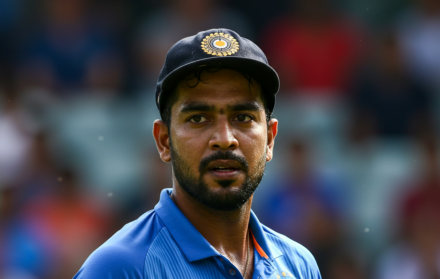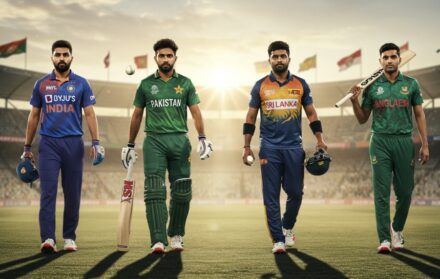
Tips for Organizing a Cricket Team for Kids
When it comes to organizing a cricket team for kids, there are numerous factors to consider to ensure a positive and enriching experience for young players. Whether you’re a coach, parent, or organizer, understanding the fundamentals of kids’ cricket is essential for creating a supportive and engaging environment.
An introduction to cricket for kids lays the groundwork for their journey into the sport, offering insights into the rules, techniques, and spirit of cricket in a manner that is accessible and enjoyable for young minds.
By familiarizing themselves with the basics of the game, coaches and parents can help instill a love for cricket in children from an early age.
Parental involvement plays a crucial role in the success of kids’ cricket programs, providing support, encouragement, and guidance to young players as they develop their skills.
Understanding the importance of parental involvement in kids’ cricket helps create a strong sense of community and camaraderie within the team, fostering positive relationships between players, coaches, and families.
Inclusivity and diversity are fundamental principles of kids’ cricket, ensuring that all children have the opportunity to participate and excel regardless of their background or abilities. Embracing inclusivity and diversity in kids’ cricket promotes fairness, equality, and respect, enriching the cricketing experience for everyone involved.
Teaching cricket to kids requires patience, creativity, and a deep understanding of child development. Effective strategies for teaching cricket to kids focus on making learning fun and engaging, incorporating age-appropriate activities and drills that cater to the unique needs and interests of young players.
Furthermore, providing the right equipment is essential for ensuring the safety and enjoyment of kids’ cricket. From lightweight bats to soft balls, selecting cricket equipment suitable for kids helps minimize the risk of injury while maximizing the fun and excitement of the game.
By incorporating these tips and insights into the organization of a cricket team for kids, coaches, parents, and organizers can create a supportive and inclusive environment where young players can thrive, develop their skills, and experience the joy of cricket firsthand.
Understand the Age Group and Skill Level of the Kids

Understanding the age group and skill level of the kids is crucial when organizing a cricket team for children. It ensures that the team is structured appropriately and tailored to meet the players’ needs. Here are some vital factors to consider:
- Age group: It is important to determine the children’s age range. Younger kids may need more basic coaching and simplified rules, while older kids can handle more complex strategies and techniques. This will help in planning suitable training sessions and match formats.
- Skill level: It is essential to assess each child’s skill level and group them accordingly. This will enable fair competition and provide coaching and development opportunities. Consider factors such as batting ability, bowling technique, fielding skills, and cricket knowledge.
- Team size: Depending on the age group and skill level, determine the ideal team size. Smaller teams may be more suitable for younger kids, allowing them more involvement and opportunities to actively participate.
- Net practice and drills: Design practice drills and net sessions that cater to the specific age group and skill level. Focus on fundamental skills such as catching, throwing, batting, and bowling, gradually progressing to more advanced techniques as the kids improve.
- Match formats: Choose match formats suitable for the age group and skill level. For younger children, consider shorter formats like mini-cricket or modified games with fewer overs. As they progress, introduce longer match formats to develop their stamina and cricketing abilities.
Pro tip: Prioritize the learning and enjoyment of the children. Encourage fair play, teamwork, and continuous improvement, regardless of the age group or skill level.
Determine the Roles and Responsibilities
The roles and responsibilities of the cricket team for children should be determined to ensure smooth functioning and teamwork. Here is a table outlining the different roles and their corresponding responsibilities:
Coach:
- Determine and provide guidance and training to players.
- Develop practice sessions and game strategies.
- Monitor and assess player performance.
- Communicate with parents and team management.
Captain:
- Determine and lead the team on and off the field.
- Make decisions during the game.
- Motivate and inspire teammates.
- Communicate with coaches and umpires.
Players:
- Follow the instructions of the coach and captain.
- Practice regularly to improve skills.
- Support and encourage teammates.
- Respect and abide by the rules of the game.
Parents:
- Provide necessary support and encouragement to their child.
- Attend matches and practices.
- Ensure proper equipment and safety measures are in place.
- Communicate with the coach and team management.
Everyone involved should understand their roles and responsibilities to create a cohesive and successful cricket team for children. Clear expectations and effective communication are essential for the team to work towards their goals and provide a positive and enriching experience for the young players.
Select a Captain and Vice-Captain

When forming a children’s cricket team, selecting a captain and vice-captain is crucial for the team’s success and cohesion. Please follow these steps:
- Evaluate leadership qualities: Observe players during practice and matches to identify those with good communication, decision-making, and motivational skills.
- Consider experience: Take into account players’ knowledge of the game and understanding of cricket strategies and rules.
- Assess teamwork skills: Look for players who can collaborate well with others and encourage teamwork.
- Consult with coaches: Seek insights from coaches who work closely with players to assist with the selection process.
- Discuss with players: Involve players in the decision-making process to promote responsibility and ownership.
- Ensure commitment and dedication: Select players who are committed to the team and the sport, setting an example for others.
- Monitor performance: Evaluate potential captains and vice-captains in areas such as batting, bowling, fielding, and decision-making.
- Maintain a positive team dynamic: Consider the chemistry and camaraderie among players, ensuring that the captain and vice-captain can foster a positive environment and motivate their teammates.
Divide the Team into Batsmen, Bowlers, and All-rounders
To effectively organise a cricket team for children, it is important to divide the team into batsmen, bowlers, and all-rounders. This division allows each player to focus on their specific skills and contribute to the overall performance of the team. Here are the steps to divide the team:
- Assess skills: Evaluate the strengths and abilities of each player to determine whether they are suited to be a batsman, bowler, or all-rounder. This can be achieved through practice sessions and friendly matches.
- Select batsmen: Identify players with good batting technique, hand-eye coordination, and a calm disposition. Each team should have a sufficient number of batsmen to ensure continuity during the game.
- Choose bowlers: Look for players who can bowl accurately and generate speed or spin. Select a combination of fast bowlers and spinners based on the team’s strategy and pitch conditions.
- Pick all-rounders: Identify players who have both batting and bowling skills. All-rounders provide flexibility and variety to the team.
- Consider fielding abilities: Take into account the fielding abilities of each player. Skilled fielders can have a significant impact on the game.
- Regular practice: Encourage players to practice and improve their skills. Batsmen should focus on strokeplay and shot selection, bowlers should work on accuracy and variations, and all-rounders should strive to excel in both disciplines.
By following these steps, you can effectively divide your cricket team into batsmen, bowlers, and all-rounders, optimizing the team’s performance and giving each player the opportunity to showcase their skills.
Develop a Training Plan
Developing a training plan is crucial for the progress and improvement of a children’s cricket team. Here is a step-by-step guide on how to develop a training plan:
1. Evaluate the team’s skill levels and strengths: Start by assessing the abilities of the players and identifying the areas that need improvement.
2. Establish specific objectives: Determine what skills, teamwork, and game performance you want the team to develop.
3. Create a structured training schedule: Plan regular practice sessions that include skill drills, fitness exercises, and game simulations.
4. Concentrate on skill development: Design drills that focus on batting, bowling, fielding, and wicketkeeping. It’s important to vary the difficulty and intensity of the drills.
5. Promote teamwork and communication: Include team-building activities and scenarios that require effective collaboration among the players.
6. Incorporate match simulations: Organize practice matches to provide the players with opportunities to apply their skills in a competitive environment.
7. Monitor progress: Regularly assess the progress of the players and provide guidance on areas that need improvement.
8. Adapt the training plan: Adjust the training plan based on the performance of the players, their individual needs, and the upcoming matches.
9. Ensure safety and well-being: Prioritize warm-up exercises, stretching, hydration, and injury prevention to ensure the safety and well-being of the players.
10. Encourage enjoyment and a positive mindset: Foster a supportive and enjoyable environment that motivates the players to enjoy the game and have a positive mindset.
By following these steps, you can develop an effective training plan for a children’s cricket team.
Promote Teamwork and Collaboration
Promoting teamwork and collaboration is of utmost importance when organizing a children’s cricket team. It helps them develop valuable skills and creates a supportive environment.
Encouraging open communication is crucial to create an atmosphere where children feel comfortable expressing their thoughts and ideas, thus promoting active participation and collaboration.
Emphasizing listening is also important, as it teaches children to actively listen to their teammates and respect their opinions, fostering empathy and encouraging teamwork.
Assigning team roles is another effective strategy to enhance collaboration and accountability among players. For example, designating a team captain who can lead and motivate the team. In addition, promoting collective decision-making is essential.
This can be achieved by encouraging players to work together for the team’s benefit, whether through team meetings or interactive decision-making activities.
To develop trust and camaraderie among team members, it is beneficial to organize team-building exercises or bonding activities.
These activities will strengthen their relationships and create a solid foundation for effective teamwork. Setting common goals, such as winning a match or improving skills, will instill unity and motivate players to collaborate towards these objectives.
Providing constructive feedback is crucial. Teaching children how to give and receive feedback in a constructive manner helps them improve individually and as a team, ultimately leading to better collaboration. Lastly, celebrating achievements together as a group is important.
Recognizing and celebrating the team’s accomplishments boosts morale, reinforces the significance of teamwork, and encourages continued collaboration.
Foster a Positive Learning Environment
Creating a positive learning environment is crucial for organizing a children’s cricket team. It enhances their experience and cultivates their skills and proficiency in the sport.
- Encourage teamwork: Emphasize the value of teamwork and collaboration among players. This boosts their well-being and helps them understand the importance of working together towards a common goal.
- Promote inclusivity: Create an environment where all players feel welcomed and valued. This fosters a sense of belonging and builds positive relationships among the team.
- Provide constructive feedback: Offer feedback in a positive and encouraging manner. This helps players identify areas for improvement and motivates them to enhance their skills.
- Set realistic expectations: Base expectations on players’ abilities and age. Ensure expectations are attainable and fair to avoid unnecessary pressure and disappointment.
- Celebrate achievements: Recognize and celebrate individual and team achievements. This boosts confidence and reinforces a positive learning environment.
By fostering a positive learning environment, children can develop not only their cricket skills but also life skills such as teamwork, resilience, and sportsmanship.
Create an environment where they feel supported, motivated, and inspired to excel in their cricket journey. Remember, fostering a positive learning environment is essential for the holistic development of young cricketers.
Encourage Sportsmanship and Fair Play
Encouraging sportsmanship and fair play are crucial when organizing a cricket team for children. Here are some key strategies to promote these values:
1. Set a good example: Coaches and parents should display good sportsmanship and fair play. This establishes the tone for the entire team and teaches children the importance of respectful conduct.
2. Emphasize respect: Instruct players to show respect towards opponents, teammates, officials, and the game itself. Highlight the significance of treating others fairly and kindly.
3. Emphasize the spirit of the game: Teach children that cricket is not only about winning but also about enjoying the game, acquiring new skills, and making friends. Encourage them to appreciate the efforts of their teammates and opponents.
4. Teach fair competition: Stress the importance of playing within the rules and accepting decisions made by umpires or officials. Urge players to compete strongly but without unsportsmanlike behavior.
5. Foster teamwork: Cultivate camaraderie and teamwork among players. Teach them to support and encourage each other, regardless of individual performance.
6. Promote inclusivity: Ensure that all players feel valued and included, regardless of their skill level. Teach them to support and celebrate their teammates’ accomplishments.
7. Manage emotions: Assist players in understanding and controlling their emotions during matches. Teach them techniques to deal with frustration, disappointment, and pressure.
8. Acknowledge good sportsmanship: Highlight and reward instances of fair play and good sportsmanship. This reinforces positive behavior and encourages others to do the same.
By implementing these strategies, coaches and parents can encourage sportsmanship and fair play among young cricket players, creating a positive and respectful environment.
Set Realistic Goals and Objectives

Setting realistic goals and objectives is crucial for organising a cricket team for children. It guides the team’s progress and ensures a positive experience. Here are key considerations:
- Assess the team’s skill level: Evaluate the players’ abilities to set challenging yet achievable goals.
- Prioritise personal development: Encourage each child to set their own goals, such as improving batting, fielding, or bowling. This allows them to track progress and stay motivated.
- Emphasise teamwork: Set objectives that promote unity, like effective communication and supporting teammates. Strong team dynamics lead to a successful and enjoyable cricket experience.
- Consider age appropriateness: Tailor goals to match children’s abilities based on their age and stage of development.
- Celebrate milestones: Recognise and celebrate the team’s achievements, whether it’s winning a match or improving specific skills. This boosts confidence and motivates the children to keep striving for success.
Setting realistic goals and objectives for a cricket team ensures a positive and fulfilling experience. It focuses on individual development, teamwork, age appropriateness, and celebrating milestones. This creates a supportive environment for children to enjoy and excel in the sport.
Plan and Organize Matches and Tournaments
When planning and organizing matches and tournaments for a cricket team, it is important to follow these key steps to effectively plan and organize the events.
- Determine the purpose: It is essential to establish the objective of the matches and tournaments, whether it is for practice, friendly competition, or showcasing skills.
- Create a schedule: Plan the dates, times, and locations for the matches and tournaments, taking care to avoid any conflicts with other events.
- Send out invitations: Clearly invite other teams or individuals, specifying the format, rules, and expectations of the matches and tournaments.
- Arrange facilities: Secure suitable cricket grounds or venues with proper infrastructure to ensure a smooth and enjoyable experience for everyone involved.
- Organize officials: Appoint qualified umpires, scorers, and necessary officials who are familiar with the rules of cricket to ensure fair play.
- Prepare equipment: Make sure all necessary cricket equipment is available and in good condition for the matches and tournaments.
- Promote the event: Advertise the matches and tournaments using social media, local newspapers, and community networks to attract participants and spectators.
- Manage logistics: Coordinate transportation, refreshments, and other logistical aspects for the matches and tournaments for the convenience of all attendees.
- Prioritize safety: Monitor and prioritize the safety of players and spectators by implementing necessary precautions and adhering to health and safety guidelines.
- Evaluate and learn: Review the outcomes of the matches and tournaments, analyze the performance of the teams and individuals, and gather feedback to improve future events.
By incorporating these steps into your planning and organizing process, you can ensure successful matches and tournaments for your cricket team.





